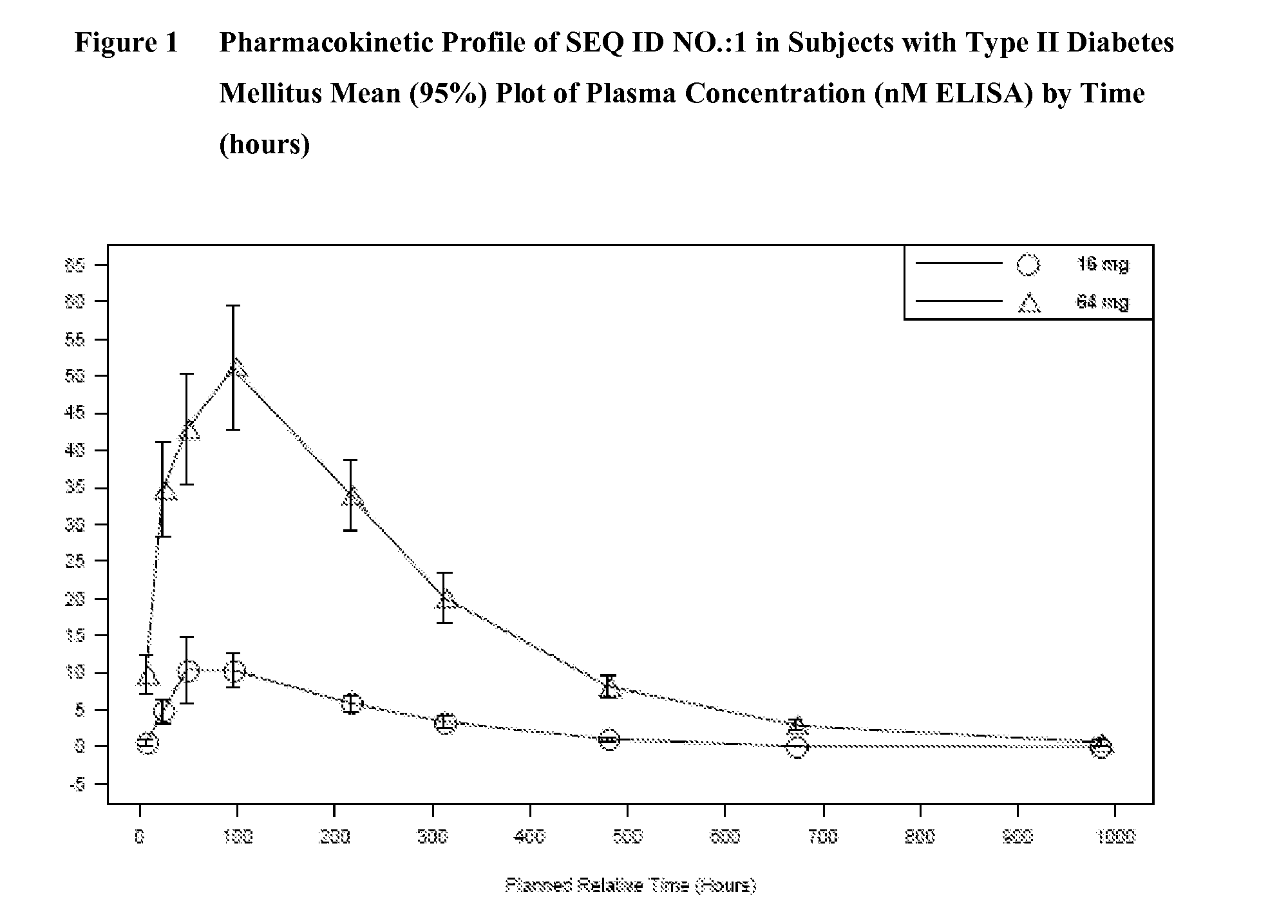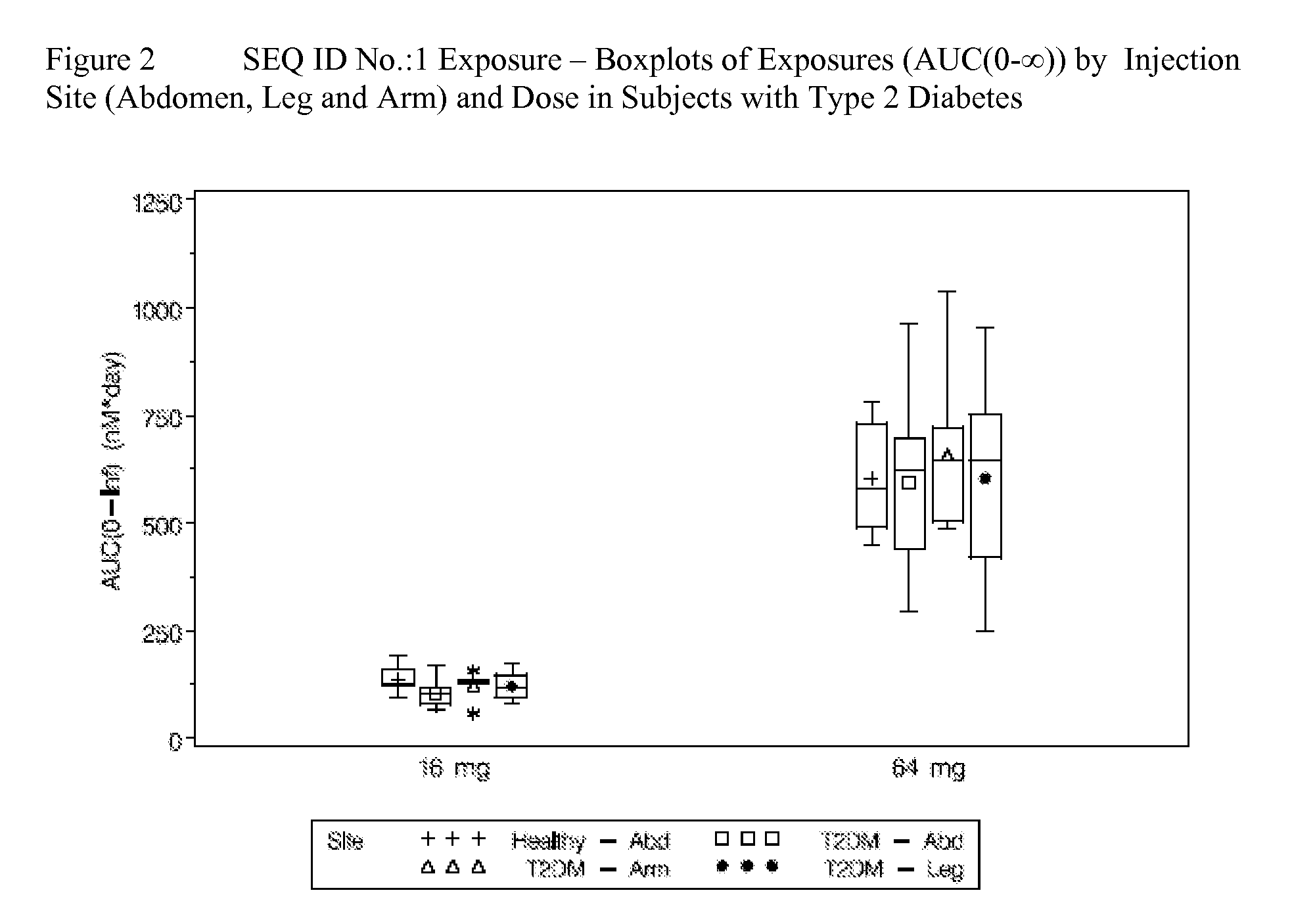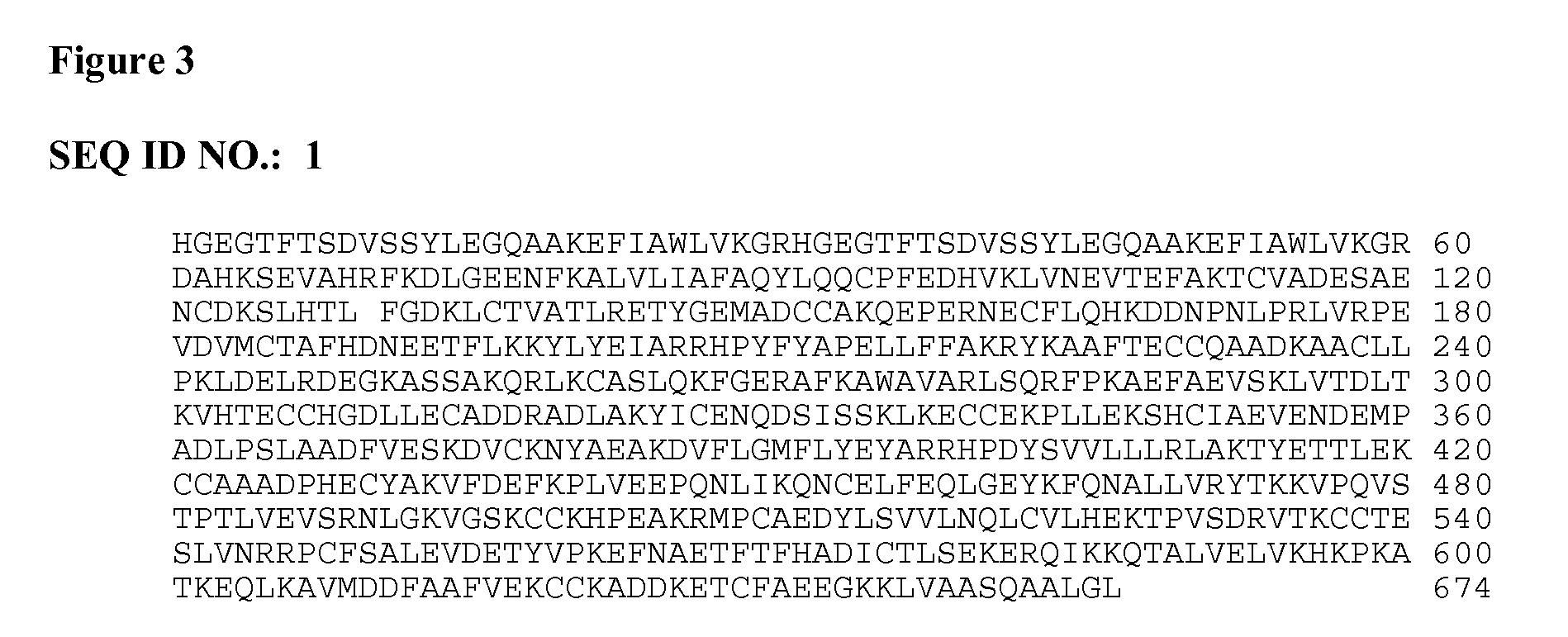Methods for administering long-lasting hypoglycemic agents
a hypoglycemic agent and long-lasting technology, applied in the direction of peptide/protein ingredients, extracellular fluid disorder, metabolic disorder, etc., can solve the problems of slowing small bowel motility and preventing food absorption, and achieves suppressing glucagon secretion, regulating post-prandial blood glucose levels, and reducing the effect of glucagon secretion
- Summary
- Abstract
- Description
- Claims
- Application Information
AI Technical Summary
Benefits of technology
Problems solved by technology
Method used
Image
Examples
example 1
[0055]This was a single-blind, placebo controlled, ascending dose study of a pharmaceutical composition comprising SEQ ID NO.:1 (0.25 mg to 104 mg) administered subcutaneously in the abdomen of healthy subjects.
[0056]Thirty-nine healthy male and female subjects were enrolled in the study. Five cohorts of healthy subjects received two weekly, escalating doses of a pharmaceutical composition comprising SEQ ID NO.:1 injected subcutaneously into the abdomen as follows: Cohort 1 (0.25 mg+1 mg); Cohort 2 (3 mg+6 mg); Cohort 3 (16 mg+24 mg); Cohort 4 (48 mg+60 mg); and Cohort 5 (80 mg+104 mg). Within Cohorts 1-4, six subjects were randomized to receive active compound and two subjects were randomized to receive placebo. Within Cohort 5, five subjects were randomized to receive active compound and two subjects were randomized to receive placebo. Thus, 29 subjects received active treatment and 10 subjects received placebo. Exposures to the pharmaceutical composition comprising SEQ ID NO.:1 i...
example 2
[0059]This was a single-blind, placebo-controlled, multiple dose study in subjects with T2DM. Fifty-four male and female subjects were enrolled in the study. Subjects were either diet-controlled or taking metformin, a sulfonylurea, or a combination of metformin or a sulfonylurea. Subjects taking metformin and / or a sulfonylurea prior to study start were washed-out from these treatments 2 weeks prior to the first dose. Subjects were either randomized to placebo or a pharmaceutical composition comprising SEQ ID NO.:1 by subcutaneous injection in the abdomen once weekly for two weeks as follows: Cohort 1 (9 mg+9 mg; 4 placebo, 14 active); Cohort 2 (16 mg+16 mg; 5 placebo, 12 active); Cohort 3 (32 mg+32 mg; 5 placebo, 14 active). Forty subjects were randomized to active treatment and fourteen subjects were randomized to placebo.
[0060]Fifty-three subjects completed the study. One subject who was randomized to receive active treatment in Cohort 2 withdrew from the study prior to administra...
example 3
[0063]Pharmacodynamic profiles of the subjects described in Example 2 are provided in this Example. Subjects received subcuntaneous injections of placebo or a pharmaceutical composition comprising SEQ ID NO.:1 dosed once weekly for two weeks as follows: Cohort 1 (9 mg+9 mg; 4 placebo, 14 active); Cohort 2 (16 mg+16 mg; 5 placebo, 12 active); Cohort 3 (32 mg+32 mg; 5 placebo, 14 active). Subjects were dosed on Day 1 and Day 8. The effects of SEQ ID NO.:1 on glucose and fructosamine in subjects with T2DM were assessed. Subjects with T2DM were either diet-controlled or taking metformin, a sulfonylurea, or a combination of metformin or a sulfonylurea and withdrew from these treatments from 2 weeks prior to the first dose. Fasting and 24-hour glucose profiles were assessed at baseline and 24-hours post the first and second dose. Fructosamine was assessed at baseline and on Day 13, Day 21 and final follow-up (Day 56 or Day 63) visit post-dose.
[0064]All subjects who received the correct ra...
PUM
| Property | Measurement | Unit |
|---|---|---|
| half life | aaaaa | aaaaa |
| serum half life | aaaaa | aaaaa |
| time | aaaaa | aaaaa |
Abstract
Description
Claims
Application Information
 Login to View More
Login to View More - R&D
- Intellectual Property
- Life Sciences
- Materials
- Tech Scout
- Unparalleled Data Quality
- Higher Quality Content
- 60% Fewer Hallucinations
Browse by: Latest US Patents, China's latest patents, Technical Efficacy Thesaurus, Application Domain, Technology Topic, Popular Technical Reports.
© 2025 PatSnap. All rights reserved.Legal|Privacy policy|Modern Slavery Act Transparency Statement|Sitemap|About US| Contact US: help@patsnap.com



